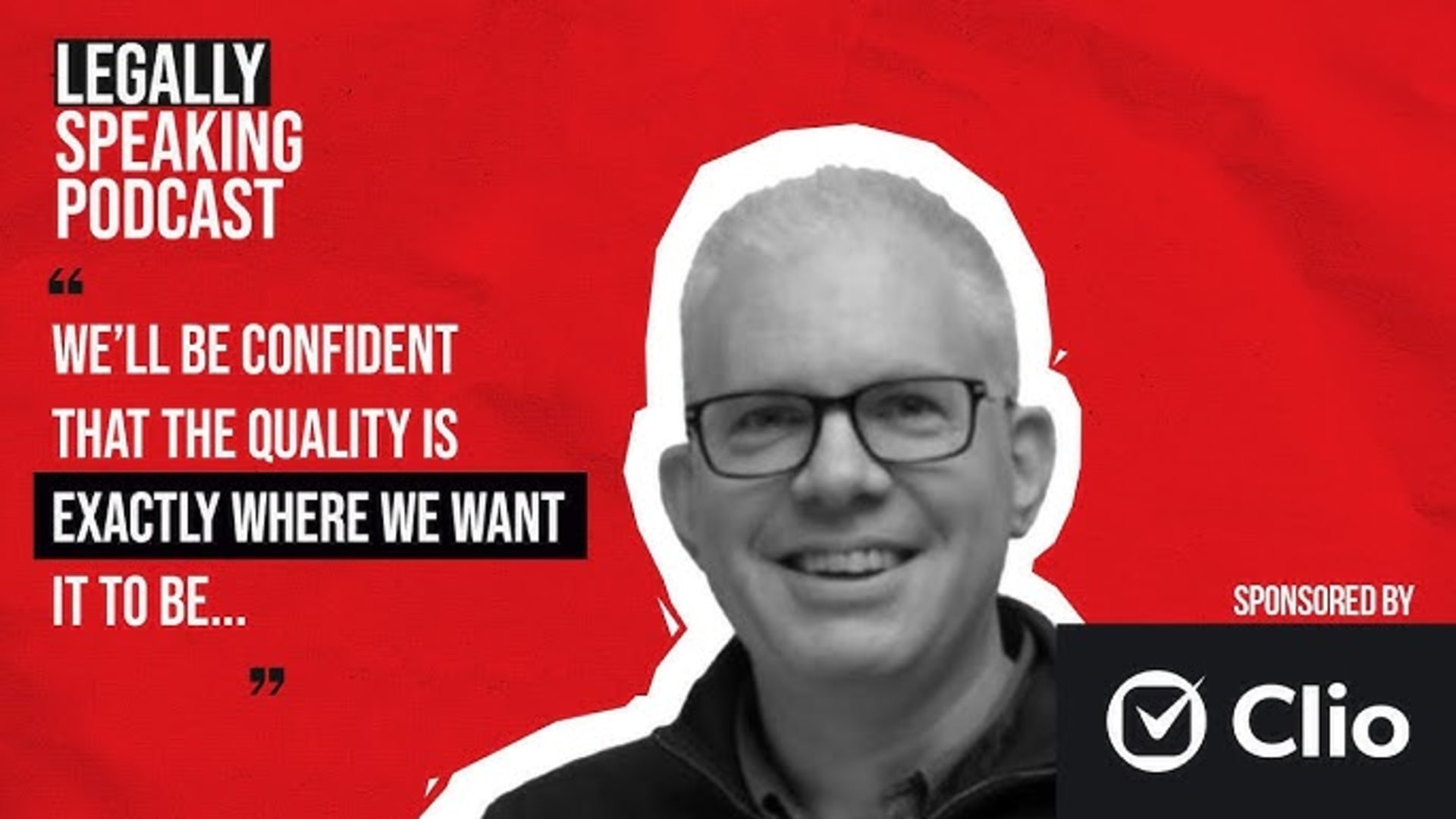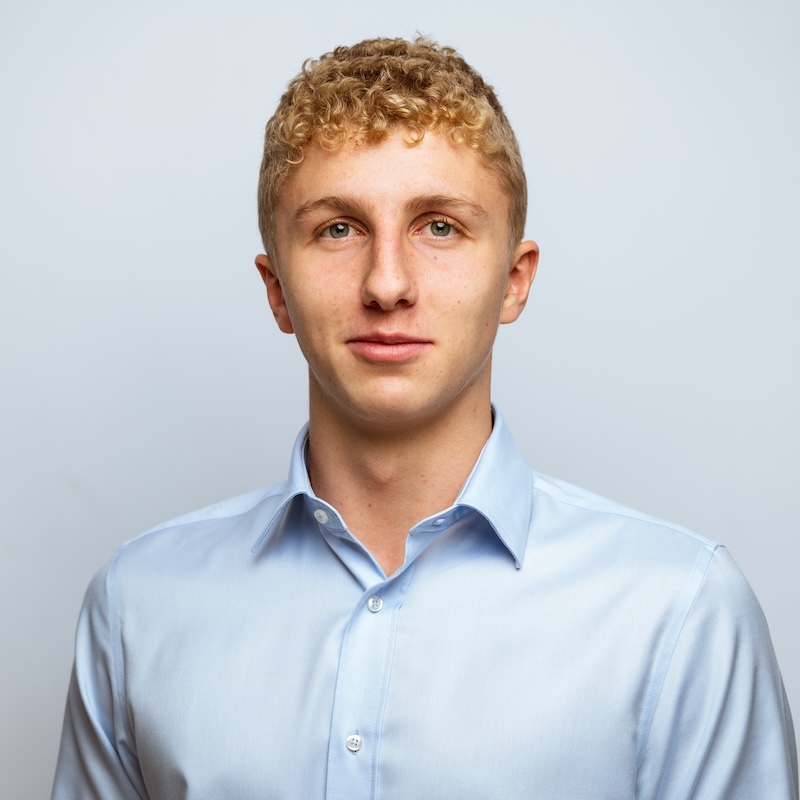Garfield AI CEO Discusses Building UK's First Accessible AI Law Firm on Legally Speaking
In an extensive conversation with Rob Hanna on the Legally Speaking podcast, Philip Young traced his journey from 25 year City law career to building the world's first SRA-regulated AI law firm, revealing the personal inspiration, technical architecture, unexpected media attention, and ethical considerations behind Garfield AI.

London, 16 June 2025 – In an extensive and revealing conversation on the Legally Speaking podcast with host Rob Hanna, Philip Young, co-founder and CEO of Garfield AI, shared the unlikely journey from a 25-year City law career to building the world's first SRA-regulated AI law firm. The wide-ranging discussion covered everything from the personal inspiration behind Garfield to its technical architecture, unexpected media attention, ethical design decisions, and vision for supporting high street legal practices.
The Origin Story: Why "Garfield"?
Philip revealed the personal connections behind both the company name and its mission. The name "Garfield" is an in-joke with his long-time friend Garfield Smith, a technology lawyer who spent years telling Philip he should have been a tech lawyer. "When I started this, I realized that Garfield had won," Philip explained with characteristic humour.
The deeper inspiration came from a more personal place: Philip's brother-in-law Andy, a plumber near Sheffield, who occasionally faced unpaid invoices from clients who simply knew small business owners lacked the time and resources to chase debts through legal channels.
This combination, namely technology and a real-world problem affecting ordinary working people, became the foundation for Garfield AI.
The ChatGPT-4 Breakthrough Moment
The catalytic moment arrived in April/May 2023 with the release of ChatGPT-4. "That was such a big jump in capability from ChatGPT 3.5 that I thought, well, we could build something with ChatGPT-4," Philip recalled.
What started as a hobby, a City lawyer tinkering with AI technology, rapidly became a serious venture as Philip recognized the potential to address a massive access to justice gap affecting UK small businesses.
The Hybrid Technical Architecture
Philip provided detailed insights into Garfield's technical design, revealing it as a hybrid system combining deterministic expert systems with probabilistic AI. Critically, with the deterministic system maintaining ultimate control.
"That design decision has probably pretty much influenced the entire product throughout," Philip explained. This architecture provides essential guardrails that mitigate issues like AI hallucination while maintaining the flexibility and capability of large language models.
The hybrid approach reflects Philip's understanding that pure probabilistic AI, while powerful, can't be fully trusted in legal contexts where reliability and predictability are paramount.
The Synthetic County Court System
Perhaps the most remarkable technical revelation was Philip's description of Garfield's testing infrastructure: "We have basically an entirely synthetic county court system that's just sat in code on our system."
This synthetic court allows the team to run vast quantities of realistic dummy cases through the system, testing edge cases and validating behaviour without involving actual courts or clients. Philip demonstrated this capability to the Justice Select Committee in Parliament, who were reportedly impressed by the sophistication of the testing approach.
This level of rigorous testing demonstrates the engineering discipline Philip and his team, particularly co-founder Dan, bring to legal technology development.
The Team: Bridging Law and Technology
The core Garfield team reflects an unusual combination of expertise:
- Philip Young - 25 years as a City litigation lawyer with 1980s computing background
- Daniel Long - Master's in quantum physics, was pursuing a Ph.D. in photonics before committing full time to Garfield
- Three software developers - Building and maintaining the technical platform
Philip's background in 1980s computing, learning to program on BBC Micros and ZX Spectrums, has proven invaluable in bridging the gap between legal expertise and technical development. "If you're going to build a law tech product, particularly in the contentious space, I really think there's got to be a lawyer leading the product development," Philip emphasized.
The reason is simple but profound: "Only an experienced lawyer would know about" the countless edge cases that arise in litigation. Situations that might seem illogical or unnecessary but reflect real-world complexity that technology must accommodate.
The Unexpected Media Frenzy
Philip candidly admitted he wasn't prepared for the media attention Garfield received. "I had been planning a very quiet, nice, stealth launch over six months," he said. Then the Financial Times discovered Garfield, and "that was the end of that."
Suddenly Philip found himself:
- In the Financial Times
- Summoned to BBC Radio's flagship Today programme
- With his parents waking up early to listen to his three-minute radio appearance
The contrast between Philip's planned low key approach and the reality of international media attention underscores how significant the legal and technology communities viewed Garfield's achievement in receiving SRA authorization.
How Garfield Actually Works
Philip explained that Garfield replicates what a good law firm would do for small debt claims under £10,000:
Document Triage and Understanding
The process starts with document triage. Garfield analyzes what's been uploaded and explains its understanding back to the user to ensure no misunderstanding. This is a critical quality control step.
Complete Lifecycle Management
Garfield then guides clients through the entire litigation lifecycle:
- Pre-action letters before action
- Claim forms and particulars of claim
- Default judgment applications
- Settlement negotiations
- Trial preparation including bundles, skeleton arguments, and talking notes
The One Exception: Courtroom Advocacy
The only thing Garfield can't (and won't) do is courtroom advocacy. Philip has "philosophical reservations" about automating this aspect of legal practice, believing the human element of advocacy is essential and should remain with qualified lawyers.
Judiciary interest
Philip shared the surprising response from the senior judiciary when he asked if they were concerned about Garfield potentially opening the floodgates to more claims. They provided three compelling reasons for welcoming access to justice products like Garfield:
1. Limited Court Burden
70% of debt claims never get disputed anyway, so increased claim volumes don't necessarily mean proportionally increased court work.
2. Addressing Unrepresented Litigants
Garfield helps solve the massive problem of unrepresented litigants appearing in court with "plastic carrier bags full of looseleaf papers," unable to properly present their cases.
3. Revenue for Underfunded Courts
Increased court fees from more claims generate revenue that can support chronically underfunded areas like family and criminal courts.
This judicial perspective on access to justice validates Garfield's mission and demonstrates how technology can align private innovation with public interest.
Ethical Architecture: Design Decisions for Risk Reduction
Philip described several key architectural decisions made specifically to reduce ethical and professional risks:
No Client Bank Account
Eliminating client money handling removes a major risk area while allowing debtors to pay creditors directly. This is simpler and safer for all parties.
Claimant-Side Only
Despite having the technology to build defendant-side products, Garfield deliberately remains claimant-side only to avoid conflicts of interest.
Logical Separation Between Clients
The architecture ensures complete confidentiality through logical separation of all client matters.
Transparent Disclosure
Letters clearly explain what Garfield is and how it works, ensuring recipients understand they're dealing with an AI-powered platform operating under SRA regulation.
These decisions reflect Philip's 25 years of legal practice experience informing technological design and understanding risks before they materialize and building systems that inherently minimize them.
Supporting High Street Practices
While acknowledging that large City firms are "throwing a lot of money" at proprietary AI tools, Philip expressed passion for supporting smaller high street practices.
"I come from Derbyshire, and a lot of people I knew up there were high street solicitors or country solicitors. I'm very keen to support that world," Philip explained.
An interesting discovery: some law firms have challenged Philip's assumption that they'd want debt recovery letters on their own letterhead, preferring Garfield's branding. This was because "they said their clients know if they get a letter from the law firm, the firm just won't pursue it, because law firms traditionally don't always tend to pursue their debts" whereas a letter from Garfield was perceived as being more serious and carry greater likelihood of being pursued.
This insight reveals how Garfield can actually strengthen law firms' debt recovery capabilities by providing a credible enforcement mechanism they've historically lacked.
Advice for Young Lawyers
Philip offered thoughtful guidance for aspiring solicitors navigating an AI-augmented profession:
Stay Current with Technology
Young lawyers should stay current with technological developments and trial new products as they emerge. Not from fear, but to understand opportunities.
Develop Broader Skills
Philip emphasized developing skills beyond traditional legal training: "I would have benefited enormously by having experience of psychology, having some proper psychology training ... thinking about that and working a bit more on the EQ as well as the IQ would be a really good skill."
Don't Fear Job Losses
Philip reassured young lawyers worried about AI eliminating legal jobs: "The routine cognitive work" might shift to machines, but "lawyering will never change. We are all about helping people navigate a process to get to a good outcome."
The difference will be that lawyers can focus on higher-level, more rewarding work rather than "giant disclosure exercises" and "doc review." This is work that few lawyers actually enjoy.
Looking Ahead: Cautious Expansion
When asked about the future, Philip maintained characteristic caution: "I can't really see much beyond the next three or four months."
In the near term, the focus is on:
- Refining the product based on early adopter feedback
- Managing user expectations appropriately
- Considering expansion to simple loan agreements under £10,000 and other closely analogous areas
This measured approach reflects Philip's legal training: understanding risks; testing thoroughly; and expanding only when confident of quality and compliance.
Advice for Legal AI Entrepreneurs
For aspiring legal AI entrepreneurs, Philip's advice is product focused: "What do you want to build? And why? What is it that you're passionate about?... Think about who would like to buy it to make sure that there is actually a market for this thing."
This pragmatic guidance reflects lessons learned from building Garfield. Start with a real problem, understand the market, and let passion drive persistence through inevitable challenges.
The Justice Gap Mission
Throughout the conversation, Philip returned repeatedly to the access to justice mission at Garfield's core. UK SMEs are owed billions in unpaid debts, but traditional legal routes make pursuing many claims uneconomical.
Garfield addresses this market failure by making debt recovery affordable and accessible, transforming what was previously a write-off into a recoverable debt.
Listen to the Full Interview
The complete conversation between Philip Young and Rob Hanna is available on the Legally Speaking podcast, Season 9, Episode 15. The episode provides valuable insights into the technical, ethical, and practical considerations of building an AI-native law firm from the ground up.
Listen at legallyspeakingpodcast.com.
About Garfield AI Garfield AI is the world's first AI-driven law firm, approved by the Solicitors Regulation Authority. The platform helps businesses recover small debts through a hybrid AI architecture combining deterministic expert systems with large language models, maintaining the highest standards of legal practice. Founded by senior City litigation lawyer Philip Young and quantum physicist Daniel Long, Garfield is transforming access to justice for UK SMEs while supporting high street legal practices. Visit garfield.law to learn more.
About the Author

Hugo Rawling
Legal Engineer
In other news


